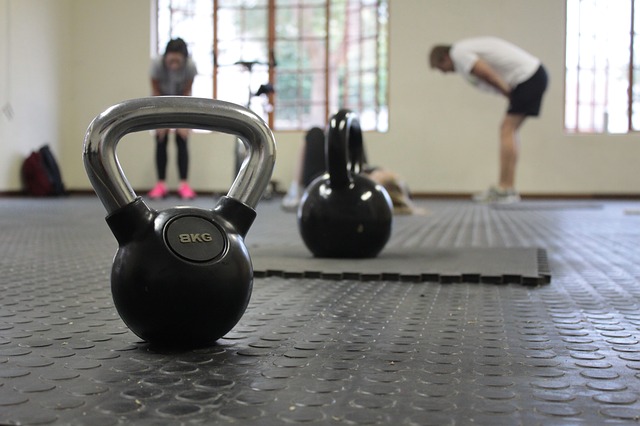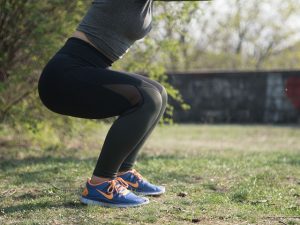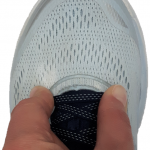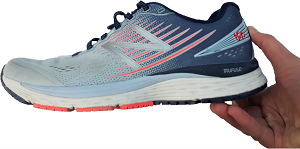
How to maximize your exercise success
When making a new year’s resolution that includes exercise, it is common for people to fall out of the routine a few months into the year. In some cases, the reason for this can be related to pain. Pain, especially in the lower limbs, can really throw off your routine and ruin the momentum from the beginning of the year.
Starting or changing up your exercise routine changes the stress put on your body, which increases your likelihood of developing pain. There are ways to maximize your exercise success by taking care of your body and ensuring your shoes and support are working positively for your body!
Gradually Make Changes
First, it’s important to point out that sudden and aggressive changes in your exercise can put too much stress on the body. Any changes should be done gradually, whether that’s increasing the intensity, duration or changing the type of exercise. If you’ve never been a runner, don’t decide to run 10 kilometers on your first run! Even if your body feels great during the exercise, it may be the complete opposite the next day. In addition to any pain felt the next day, doing this over and over again can really put a toll on your body and can lead to pain that takes weeks or months to heal.
Form/Posture
 Doing exercises correctly can go a long way! This ensures that your muscles are adapting evenly to prevent imbalances that can create issues later on. It’s much easier to do exercises with the proper form from the beginning, rather than fixing it after you’ve developed the habits.
Doing exercises correctly can go a long way! This ensures that your muscles are adapting evenly to prevent imbalances that can create issues later on. It’s much easier to do exercises with the proper form from the beginning, rather than fixing it after you’ve developed the habits.
For example, squatting and lunging with your knees collapsing in can put a lot of strain on your knees and develop one side of the quad muscles more than the other. Not only does this stress the knee while doing the exercise, the long-term effects of the muscle imbalance can create issues and pain at the knee that take much longer to treat.
Body weight or weight lifting exercises are not the only places to look out for form. Any kind of exercise from running, sport specific activities or even walking can benefit from developing the proper form. If you are unsure how to do certain exercises correctly, find someone who can help you with the correct form.
Proper Shoes
Wearing the right shoes can significantly reduce your chances of developing pain. It reduces the excessive and abnormal stress and strain, especially to commonly injured structures like your feet and knees.
Shoe Type
First, look for a shoe that fits your activity. Each shoe will have different features which can help to reduce injury.
Sport specific shoes can be helpful when reducing your chance of slipping and falling. In some cases, a running shoe may be all you need.
Walking shoes are great for walking around the neighbourhood on flat surfaces. They have features to maintain your balance and reduce stress and strain to the structures while walking.
Running shoes are better for higher impact activities such as running, sports and HIIT type workouts. They are lighter and have more cushioning to absorb impact.
Hiking shoes/boots can be used in the same way as a walking shoe, but they are also great for uneven surfaces. Therefore, these kinds of shoes are better for walking in trails through forests or over rocks.
If you are unsure which shoe to use, a running shoe is typically good for most activities!
Shoe Fit
Wearing a shoe that fits properly is another way to avoid pain. Improper fit can lead to excessive pressure leading to pain, or excessive movement inside the shoe leading to stress and strain.

Make sure that the shoe fits properly in the length, width and depth. The end of the toe should be about a thumb width (~0.5”) away from the end of the shoe. The sides of the foot should not be bulging out the sides of the shoe. Conversely, if the shoe is too wide for the foot, it can cause movement or other pressure issues. For the depth, there should be room inside the volume of the shoe, but not too much allowing you to grab a bunch of material on the top of the shoe.
Shoe Support

Support in a shoe is important to prevent excessive stress and strain to the lower body structures. Find a shoe that doesn’t bend easily through the middle of the sole. Also, check the back of the heel. When pushing at the back of the heel, it should remain solid.
Proper Support
In some cases, support in the shoe may not be enough. This is when an over the counter insert or a custom made orthotic can provide the rest of the support. These supportive inserts support the arch of the foot, provide cushioning, and guide the foot in ways that are optimal to prevent pain.
Custom foot orthotics become important when there are more specific changes that need to be made. A supportive shoe and over the counter insert can only go so far before additional features are required.
Preventing pain from the beginning, and taking care of your feet can help to maximize your exercise success, especially when starting or changing your routine!
If you have any questions, feel free to contact us or book an appointment!

You must be logged in to post a comment.